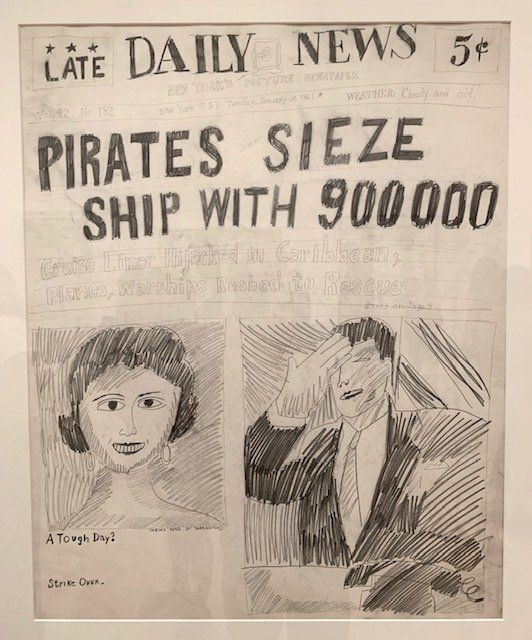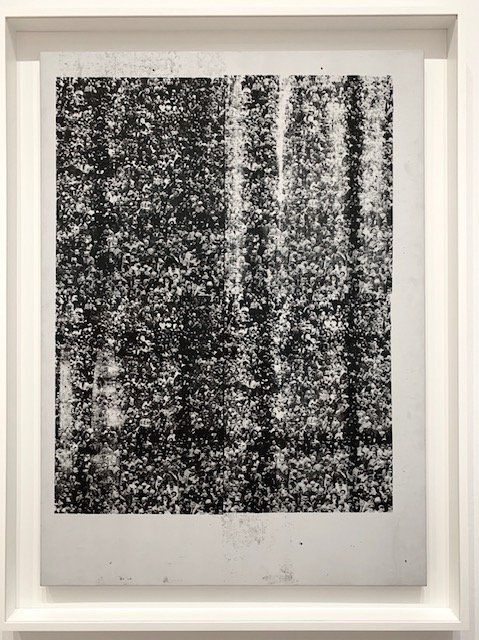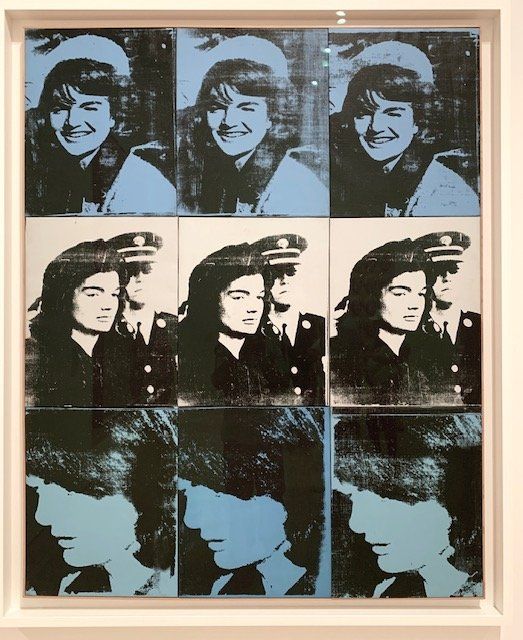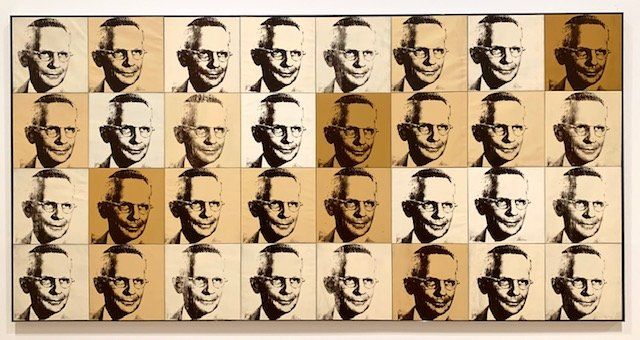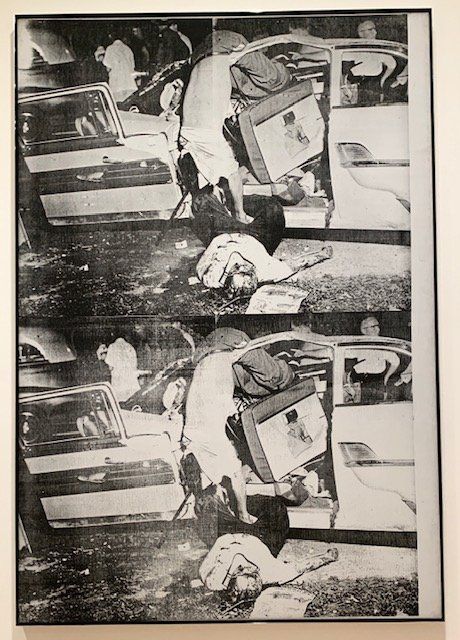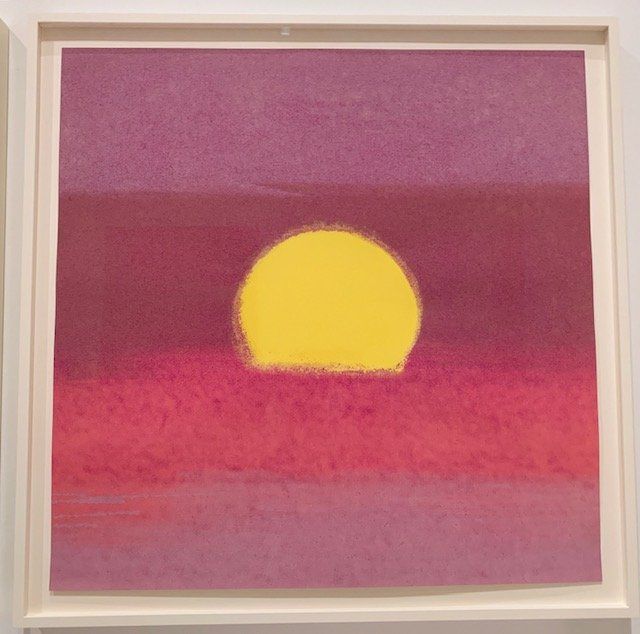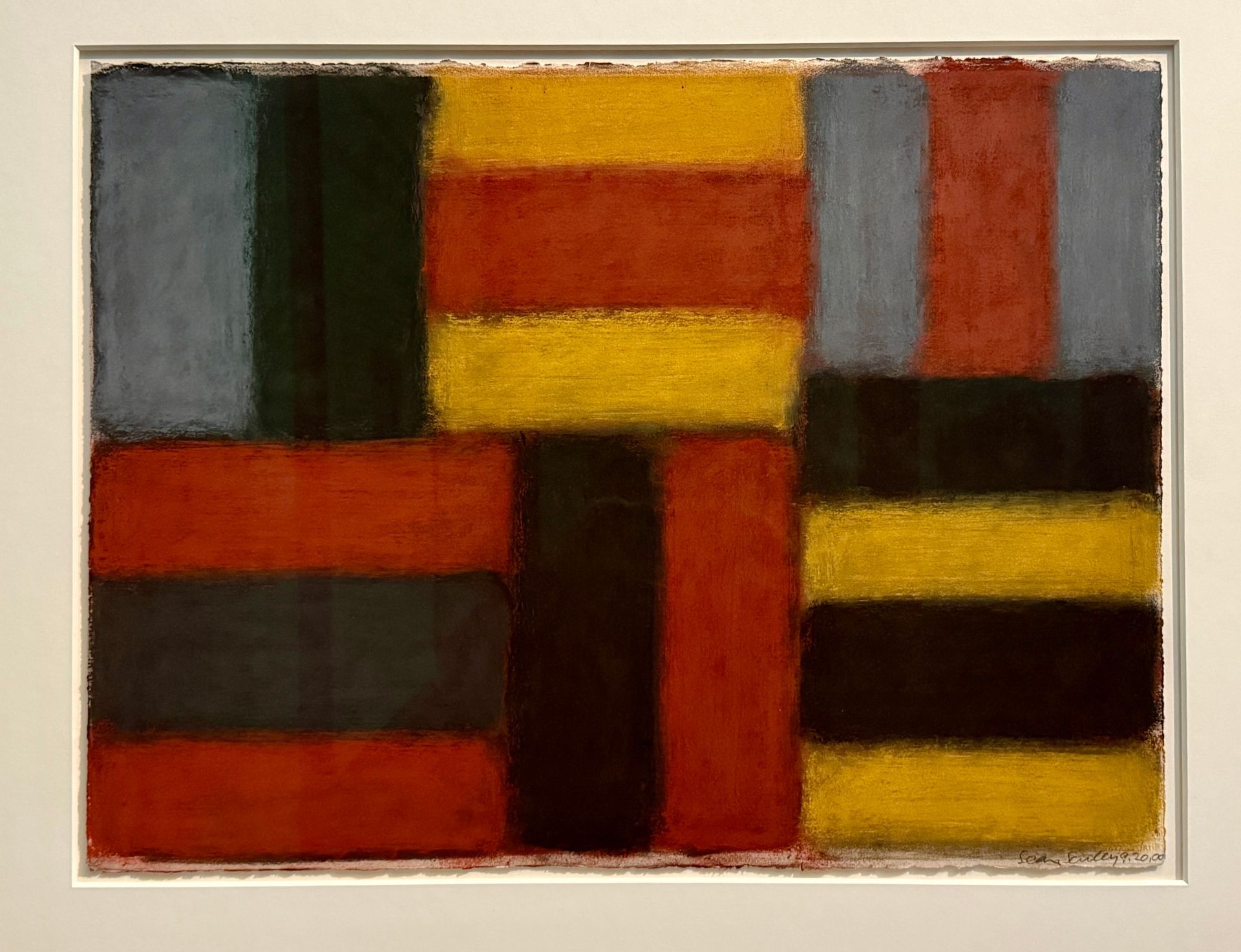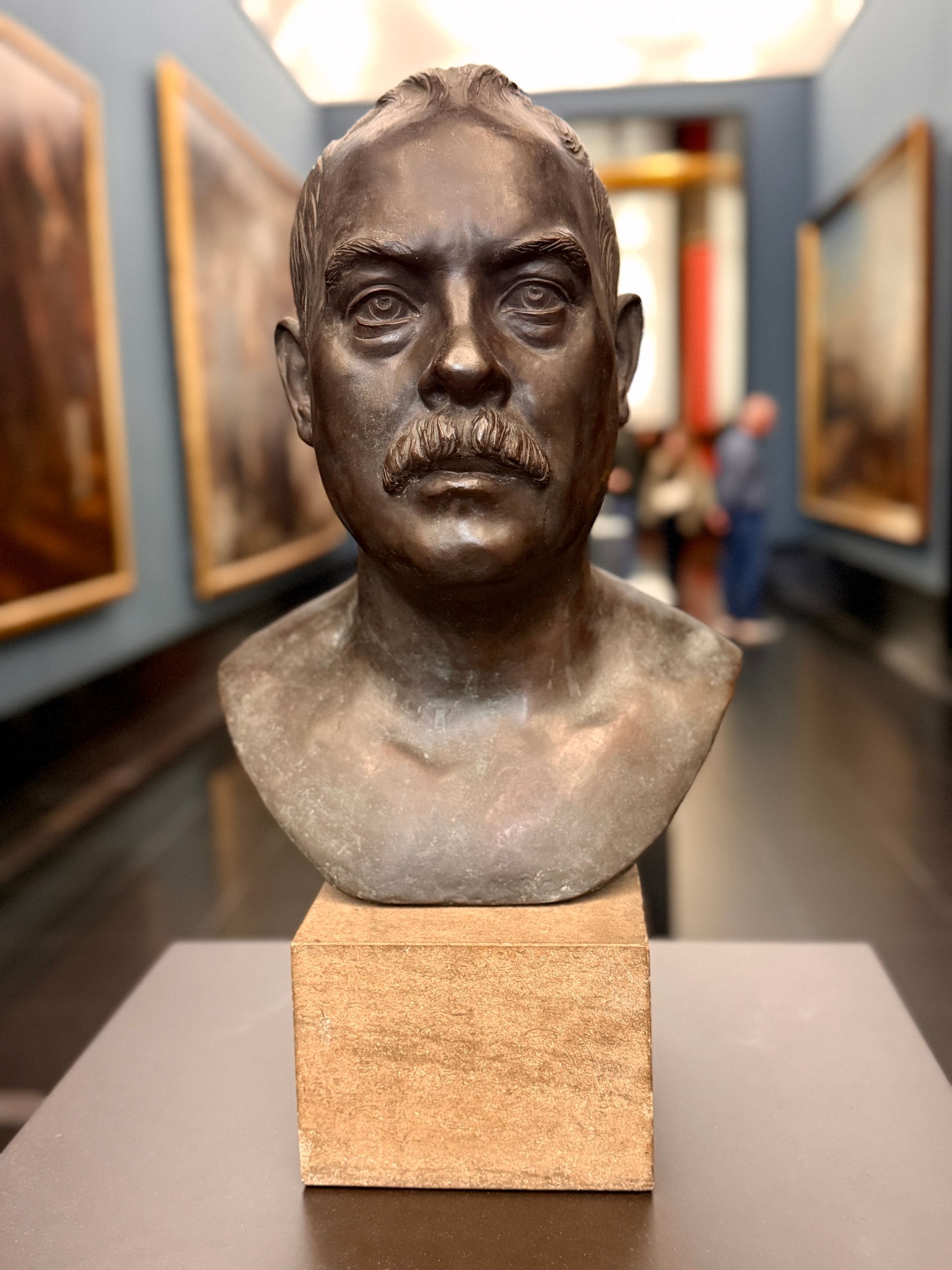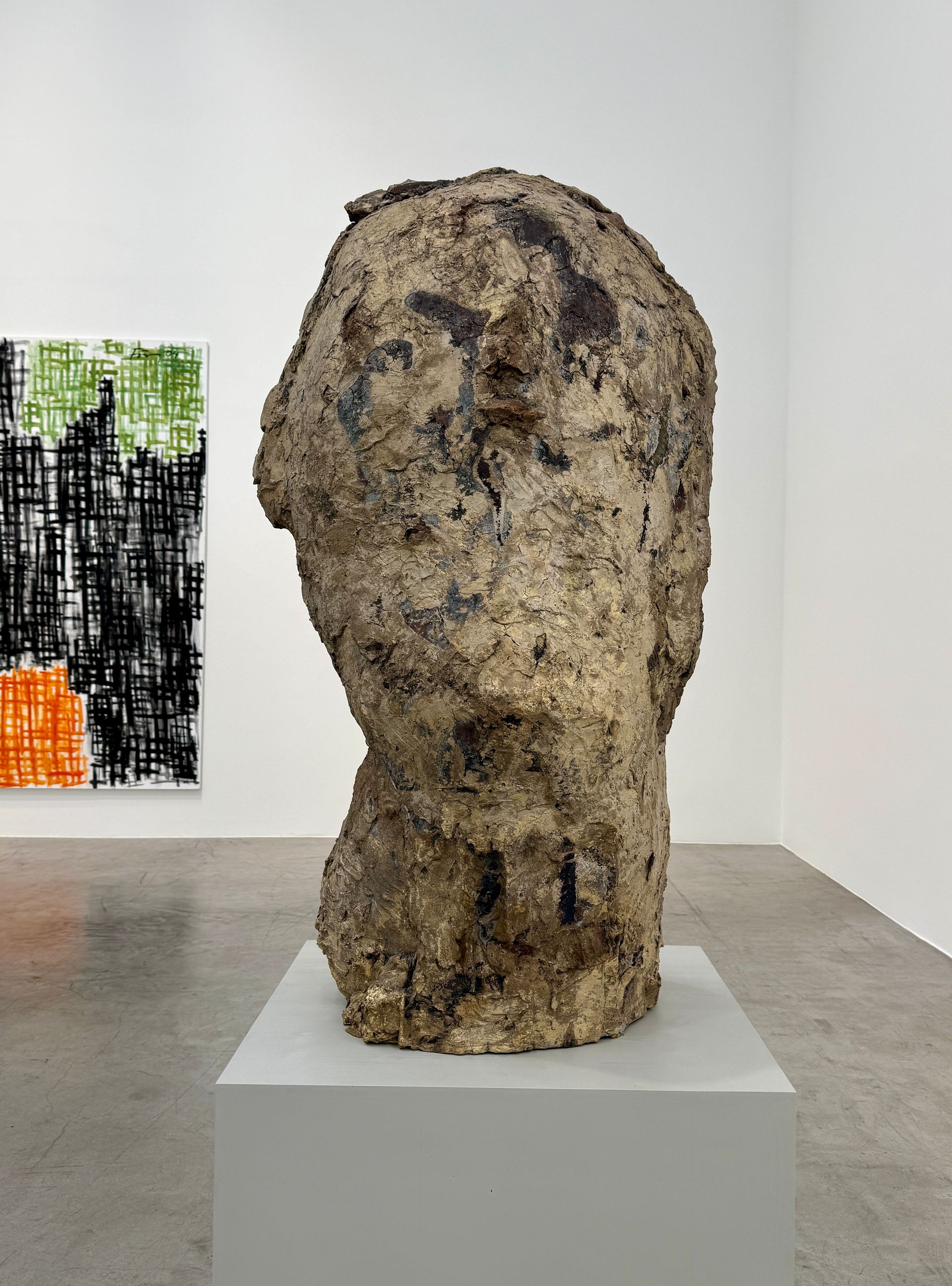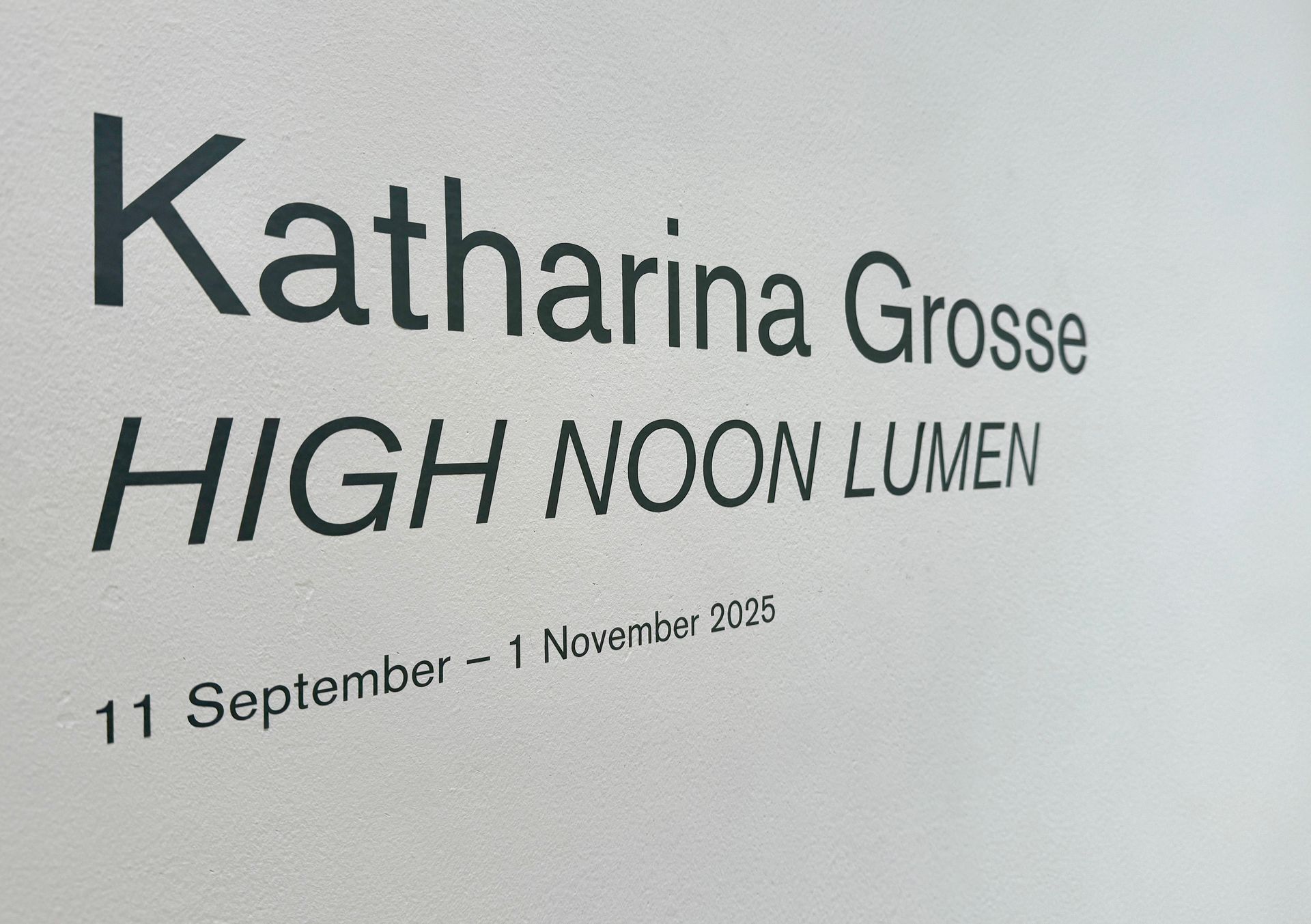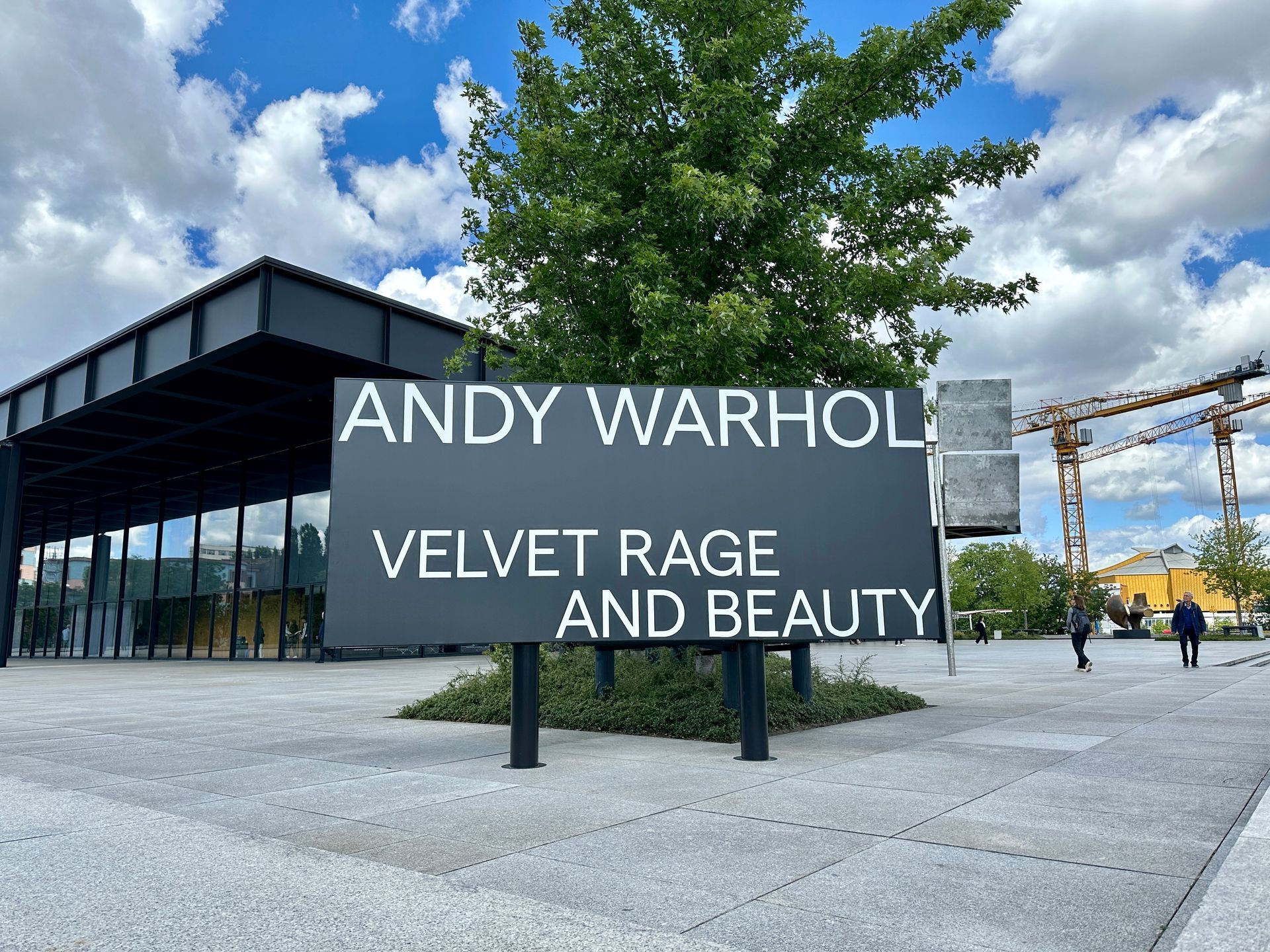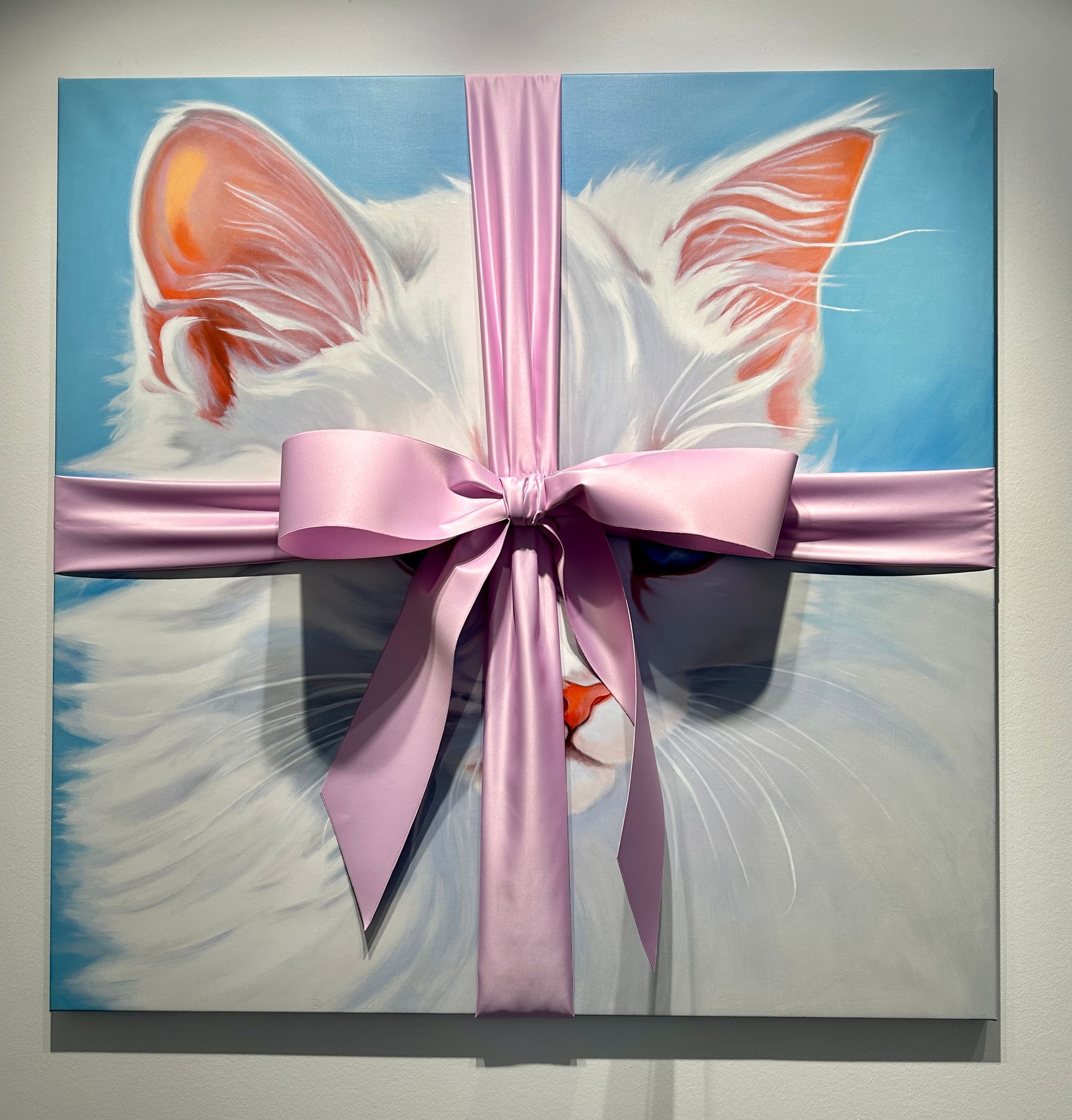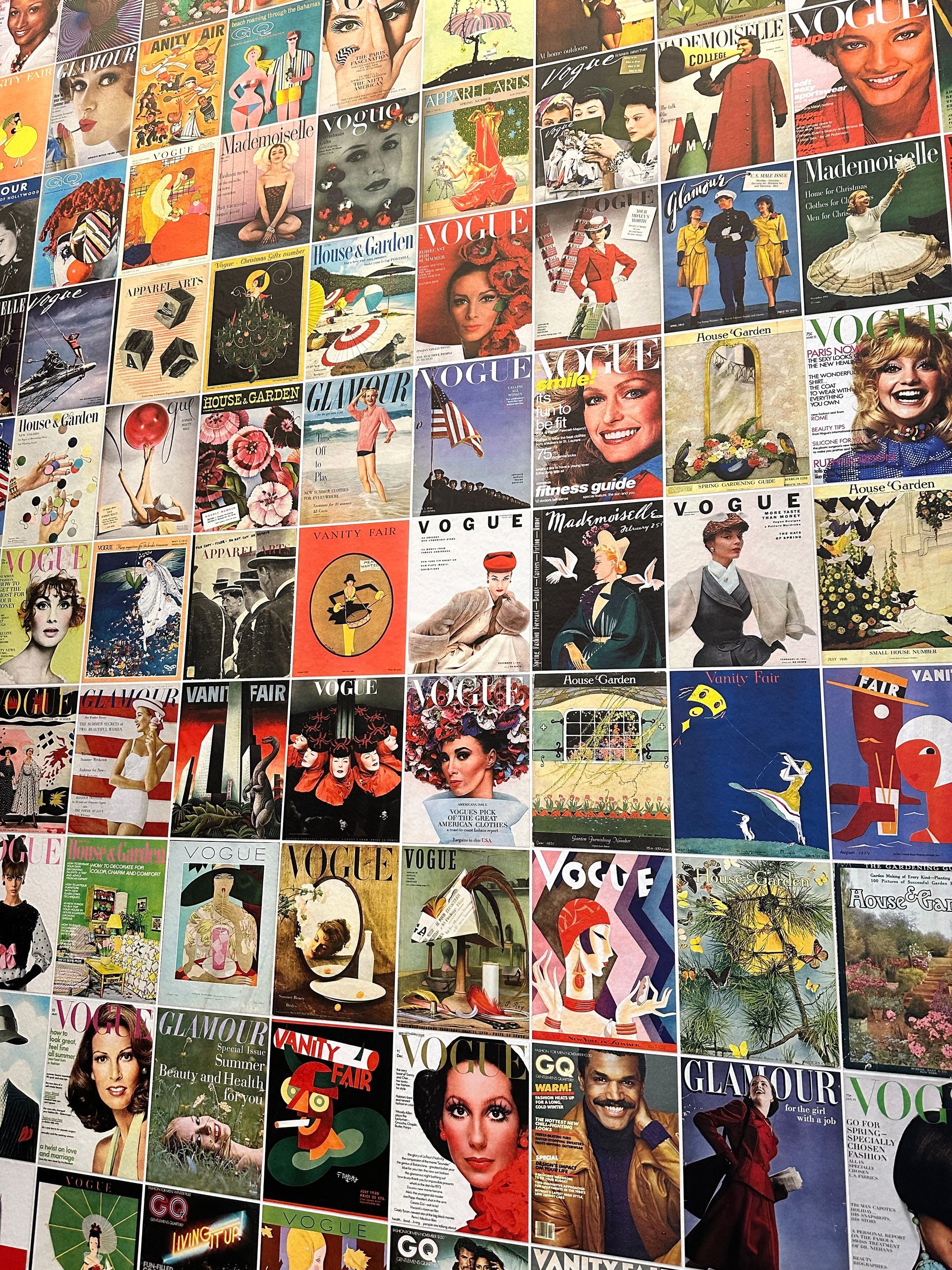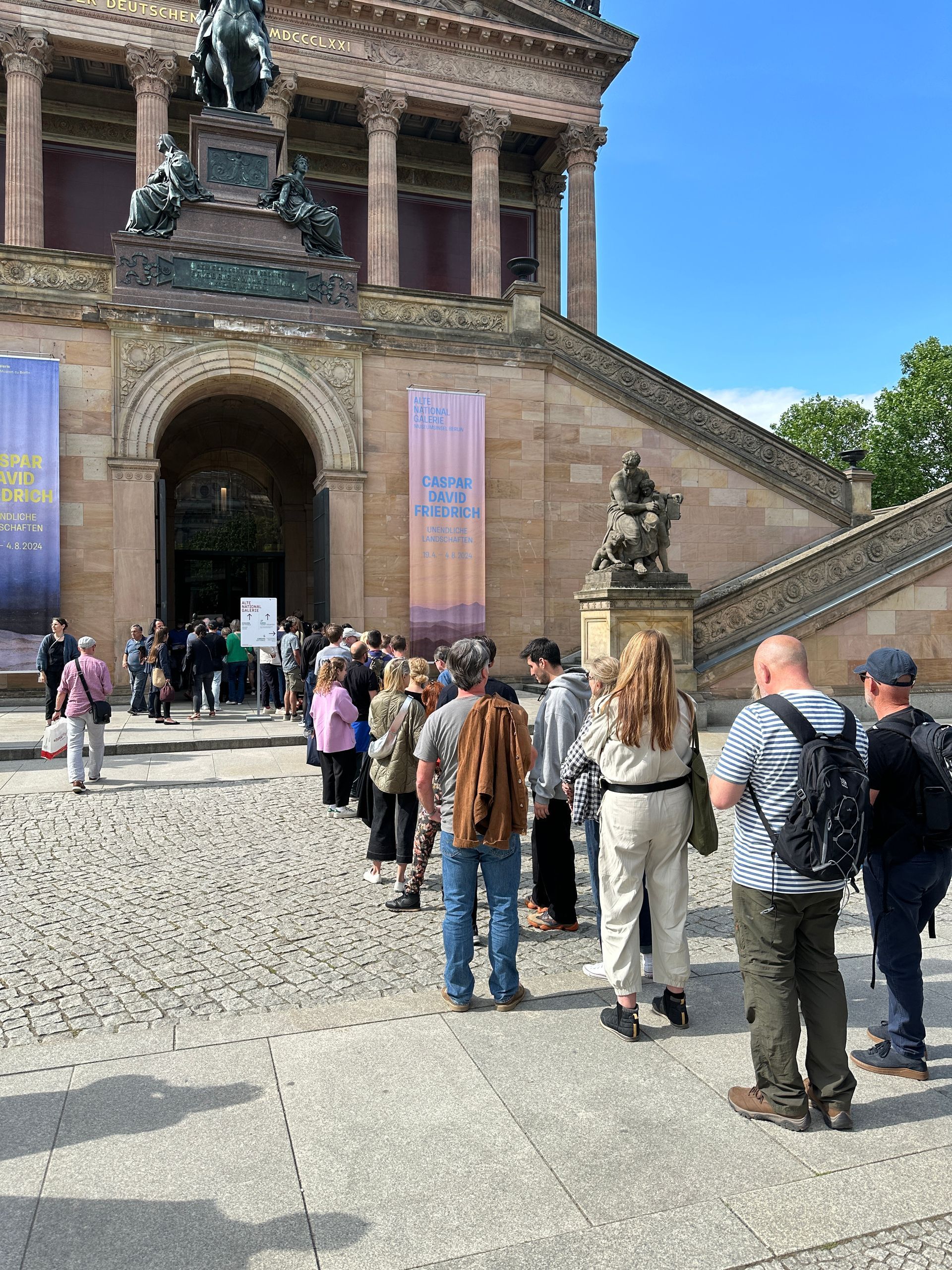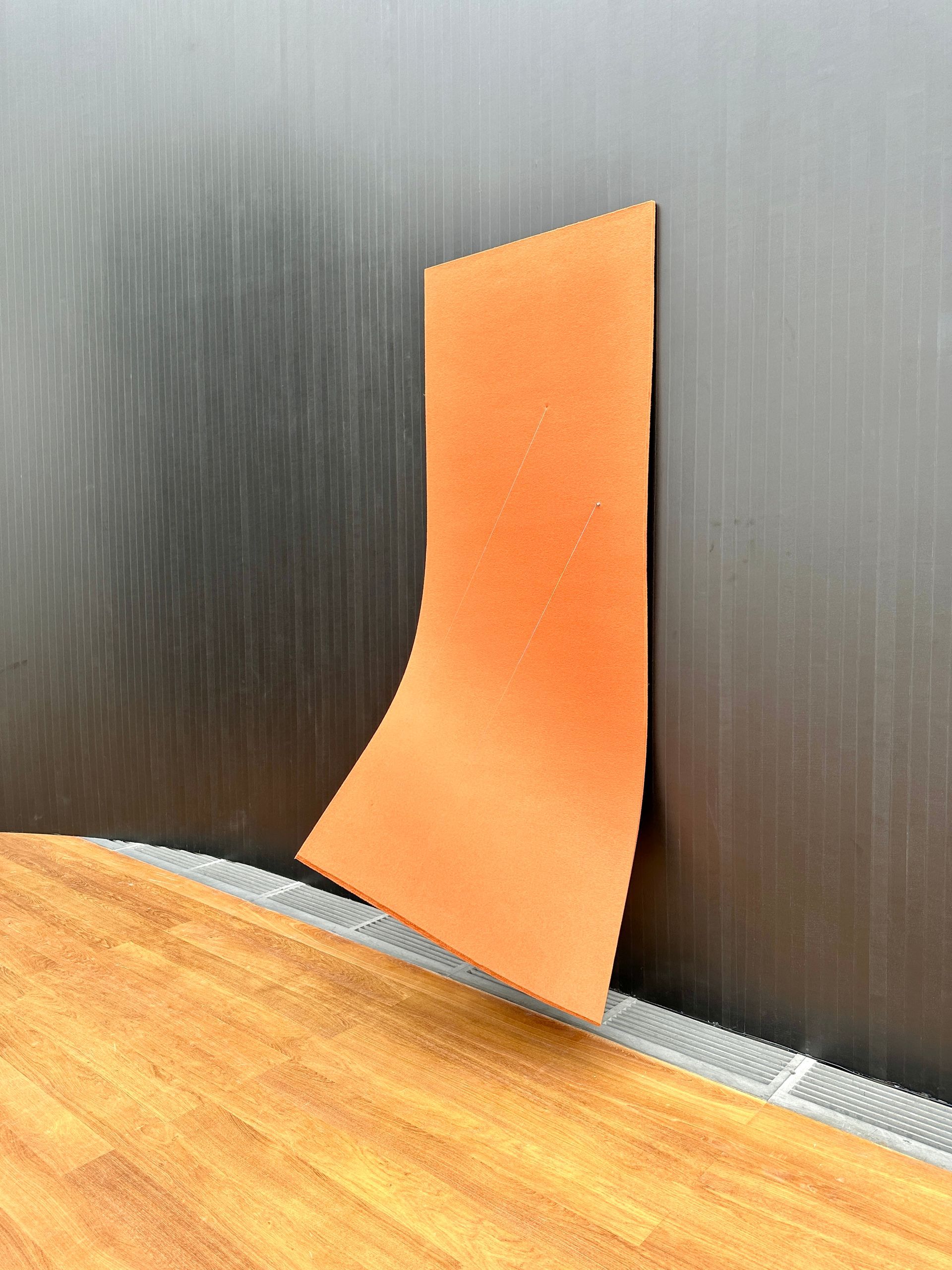Major show at SFMOMA covers Warhol's legacy
I just saw the Andy Warhol exhibit at the San Francisco Museum of Modern Art. Even though much of his source material is lifted from the pages of tabloid newspapers, the work is complex and layered with meanings. If he had lived a full lifespan, he surely would have reveled in the digital culture we currently live in – where truly anyone can have their 15 minutes of fame.
Who knows what was in Warhol’s mind? Did he really think art is just a commodity? Did he conflate fame with importance? He said many times he was lazy, and his persona was one of a perpetual party-goer; however, the Andy Warhol Museum in Pittsburgh holds 900 paintings, 100 sculptures, 2,000 works on paper, 1,000 prints, 4,000 photographs, 60 feature films, 200 short films, and 4,000 videos – and of course this is not even counting pieces in museums, private galleries and collections around the world. So, he was definitely work oriented.
Warhol was a champion of the everyday: Coca Cola bottles, Campbell soup cans, boxes of Brillo Pads, and ubiquitous print images of the famous and infamous. Those icons of the everyday underscore a common visual language. Maybe that common bond is what loosened up attendees at the museum, at least the day I was there. People seemed engaged; there was laughter, reverential silence, and lots of conversation.
Warhol has a “signature technique” which became his brand – just as great singers, like Frank Sinatra, Barbra Streisand, Rosemarie Clooney, Ella Fitzgerald, and Josh Groben – all have voices that can be immediately identified. So the brand becomes the person and marks their product as “them.” All artists who rise to the museum level have that quality.
I think with Warhol’s work, the idea of the piece – for example the idea of making a series about the electric chair– is almost as interesting as the painting itself. The piece becomes “conceptual,” because the viewer can admire and be inspired simply by the fact that someone would think of that concept. However, the painting ends up being the best way of stating that concept. So in the end the idea or concept and the piece become one thing.
The electric chair paintings are brilliant and one of the most powerful themes in this show. The electric chair is an update of the cross symbol. The cross was a method of execution. Can you imagine people commonly wearing little electric chairs on necklaces as a symbol of their faith? Today, what would that symbol be? – lethal injection implements? I’m not sure if this was the meaning that Warhol had in mind, but I think it’s an interesting angle. Even without any religious implications, the electric chair paintings are a powerful statement about the finality of capital punishment and about mortality.
Warhol’s paintings assert the beauty of repetition and pattern, but also demonstrate a visual “calendar” of our moments, days, months and years passing by. Obviously, Warhol’s death paintings of car crashes, skulls and electric chairs confront us with our own and others’ mortality. We are simultaneously repelled and fascinated by the subject.
At the time Warhol created his homoerotic drawings, paintings, and films, being gay was illegal and unspeakable in many areas of the country. For the younger museum audience, it may not register how “out there” some of the gay imagery would have been during its own time. Now people are used to seeing gay celebrities and even presidential candidates. I don’t think Andy Warhol cared what anyone thought, so I can’t say he was “brave,” but I do think the art itself was very brave for its time.
Warhol was one of those artists we can credit with changing our culture’s consciousness. Film, television, and advertising have absorbed his ideas as part of their visual toolbox. Giving credit to fame for fame’s sake was one of his main themes, and probably reality TV grew from that assertion. Would the Kardashians even exist without the Marilyn paintings?
The soup cans demonstrated how the perception of something being art, can influence its status as “real” art. Duchamp started the ball rolling, and Warhol took the idea to the bank.
Warhol died prematurely at age 58. He was buried in a black cashmere suit, paisley tie, a platinum wig and sunglasses. Who knew who he really was? And in the end, does that matter? His work stands on its own, and is a major chapter of 20th century art history.
One of my favorite Warhol quotes – and there are many good ones – is “When you do something exactly wrong, you always turn up something.” That attitude gives artists license to go for creativity at the risk of making mistakes.
“Andy Warhol-From A to B and Back Again” runs through September 2, 2019.
Here are some of my favorite pieces in the show:
“Pirates Sieze Ship…,” 1961, graphite on paper
The word “Sieze” is intentionally misspelled as it appeared in the New York Daily News headline. I’m sure if he was living today, Warhol would be working with video and installations using the constant 24-hour stream of news feeds that didn’t even exist when he was alive. Of course, the pharmaceutical commercials would play a major role.
“Crowd,” 1963, silkscreen on linen
Warhol’s source for this piece was a newswire photo of a crowd waiting to see the Pope in Rome.
(detail) “Crowd,” 1963, silkscreen on linen
“Large Sleep,” 1965, silkscreen ink on plexiglass
These two stills are from the film, “Sleep,” that Warhol did in 1963. The film was a 5½ hour depiction of his lover, John Giorna, sleeping.
“Nine Jackies,” 1964, acrylic paint and silkscreen ink on linen
The first image was taken in Dallas before the shooting, the second during the funeral, and the third during the swearing in of Lyndon Johnson. This piece is about American history, shared grief, and media saturation.
“The American Man (Portrait of Watson Powell),” 1964, acrylic ink and silkscreen ink on linen
This is a commissioned portrait of Watson Powell, founder and president of the American Republic Insurance Company. The piece ends up not only being a portrait of this high-ranking executive, but a portrait of the standard for American manhood in the 60’s.
“Saturday Disaster,” 1964 silkscreen ink on linen
This voyeuristic piece gives the viewer permission to look at a scene one would normally turn quickly away from. We are forced to confront mortality and the uncertainty of life.
Flower paintings in room with cow wallpaper.
The Flower Paintings celebrate an art cliché, and by so doing, elevates the subject to its rightful place. Can we do the same with vineyards and kittens? The cow wallpaper brings a boutique feel into the exhibit hall. Would Andy have preferred to have this exhibit in the museum gift shop?
“Mao,” 1972, acrylic paint, silkscreen ink, and graphite on linen
This image of Mao, which appeared as the frontispiece for “Quotations from Chairman Mao Tse-Tung,” was the single image Warhol used for his series of paintings, drawings, and prints of the Chinese leader, following Nixon’s historic visit.
“Sunset,” 1972, portfolio of screenprints
This is another example of Warhol taking an art cliché, reducing it to its elementary essence – and thus reinventing it as an objet d’art.
“Cross,” 1981-82, acrylic paint and silkscreen ink on canvas
The cross is about death, life, resurrection, western history, violence, colonialism, and more. The red and black emphasize the dark side of the symbol.
“Camouflage Last Supper,” 1986 acrylic paint and silkscreen ink on canvas
“Feet with Candlesticks,” 1956-57, ballpoint pen on paper
This early Warhol drawing is part of a series of homoerotic pieces, some more graphic than others, but all of them communicate tenderness. Warhol was ridiculed as a child for being a sissy, and began constructing his protective persona at an early age.


